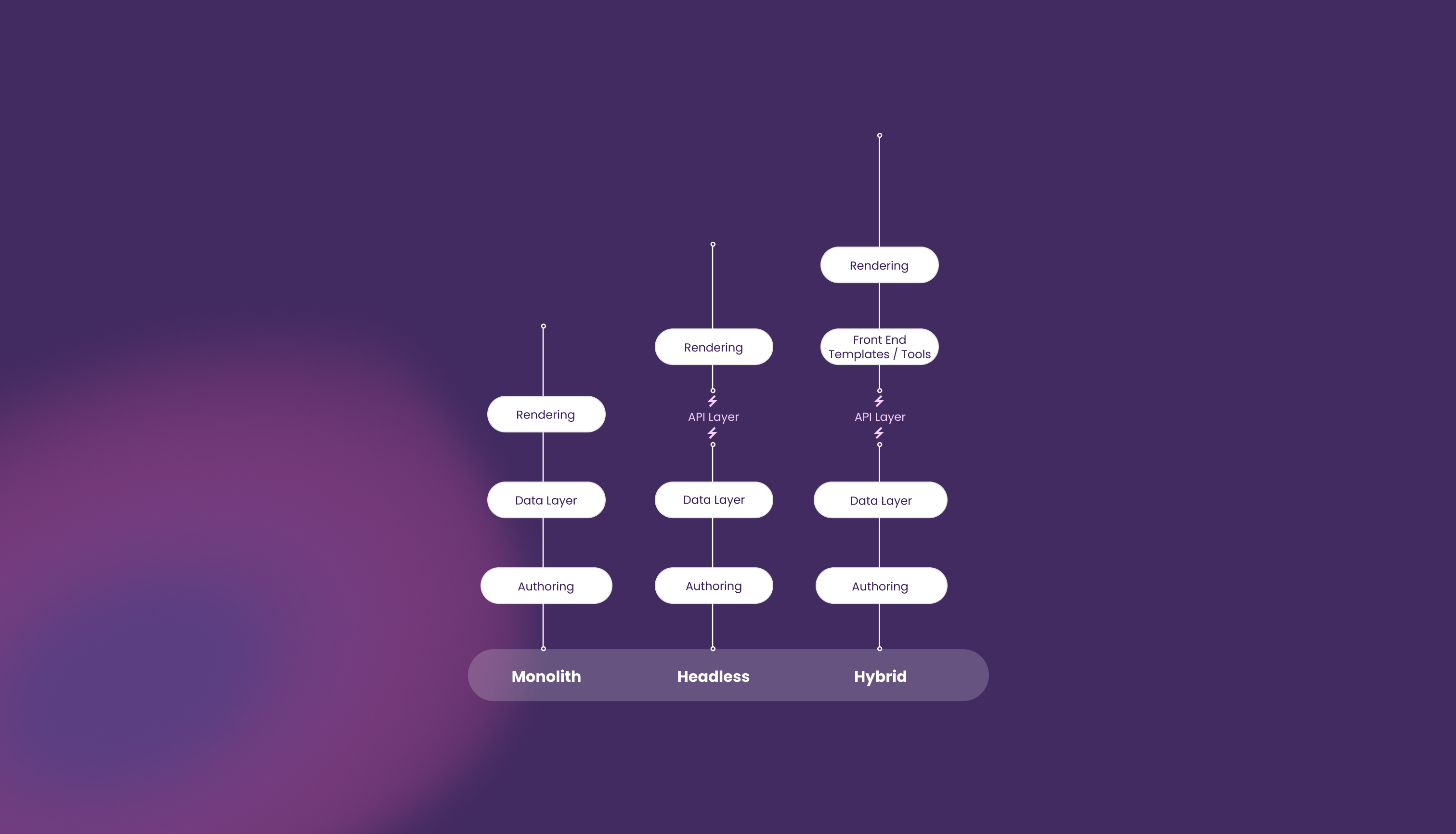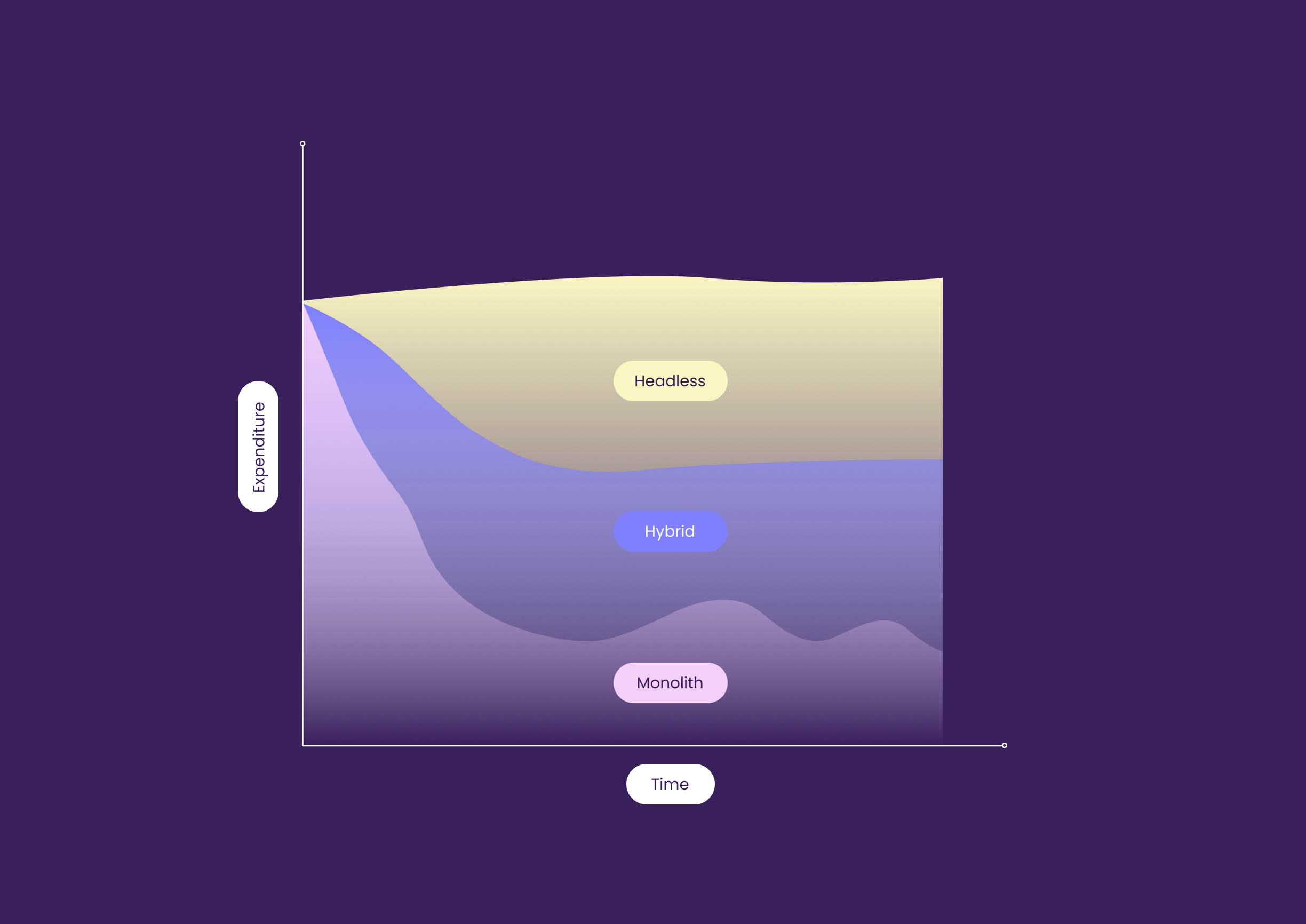Firstly, well done. The fact that you are reading this article shows that you know that plonking your shiny new website on a bog standard CMS is sooo 2018.
The stats still show that most websites are still built on traditional or ‘monolith’ CMS. Most of them are on Wordpress.
But what is ‘most websites’? Answer = blogs, hobby businesses, the local pub, etc.
For organisations of reasonable complexity the build of a website has become an opportunity to gain competitive advantage rather than a functional necessity. 5 years ago our clients rarely got excited about the difference between Umbraco or Wordpress. A few CMS enthusiasts liked the idea of what a Sitecore or Kentico could give them. The design, UX and integration capabilities were normally the interesting bit. The CMS was just a box any website needed to go in. A necessity. Fast forward to now and clients are finding that technology decisions are now actually interesting.
This is our guide on the three key things to consider.
1. Identify future ways of working before build
Early pioneers on pure headless CMS had mixed experiences. For those with in-house developers or regular access to an agency, giving up some of the content controls of a monolith CMS was relatively straightforward. For the rest (and these were the majority) it was a tale of frustration with prohibitively high costs or slow development cycles.
If there is no plan for internal developers and a need for predictable cost bases, monolithic CMS is still a common choice today. For some organisations we work and especially ones with a need for lots of content management functionality it regularly still wins out and is the best solution.
2 or 3 years ago we had clients in a slightly less favourable position.
They liked the idea of ‘headless’, had some internal web development capability and/or flexibility on budget but not enough to go fully headless.
Step forward ‘composable’. Composable CMS takes the ‘headless’ approach a step further by adding a layer of tools onto either a headless or monolith CMS. These lightweight layers can be enriched with data pulled from API’s from other platforms. The ultimate outcome is additional tools for non-technical marketers to be able to offer even better user experiences. For many it offers the best of both.

2. Define your digital roadmap over 5 years
We are still finding a lot of organisations thinking short term. They have burning platforms which need to be urgently replaced but probably know that putting out fires doesn’t really take them further forward.
By looking further ahead, requirements from a content platform change dramatically. By 2028 most businesses will need to be:
- Greener (remember for anyone in the UK the government target for reducing your business carbon emissions by 50% is 2030)
- Leaner (the recession in the UK is expected to last until 2024 and will likely be in low growth thereafter)
- More integrated (even the NHS and DWP are building open API’s at the moment)
For most organisations this will expediate the move away from paper based direct marketing to more sophisticated digital equivalents. Live Chat and Marketing Automation is now pretty standard but more interesting tools like chatbots / conversational marketing platforms and video sales agent integrations are close behind.
We also see a much stronger focus on how ‘green’ digital platforms are. Monolith platforms in general require more server power than cloud based equivalents. This is because every time a webpage is loaded the web database is pushing content into a browser. Long term hosting agreements can hide the true impact of this in financial terms but the environmental impact is a constant. If you are interested you can see how green your website is on the link below:
Website Carbon Calculator v3 | How is your website impacting the planet?
When we look at the longer term potential for integration it’s a very interesting picture. There is now much more potential for forms of digital display inside workplaces and in public spaces. Tools like PowerBI which can aggregate data from several platforms into a single view are likely to become more mainstream. We have seen a little of this already with London Luton Airport. All of their display units inside of the terminal building are powered by their CMS.
Integration puts true omni-channel marketing within the reach of many more small / medium sized organisations. We are very excited about the opportunities offered by Google Analytics 4 which will have the ability to track users across different digital platforms for the first time. As we learn more about how our customers move between web platforms it is bound to change how we manage content. Having a central content repository which can post to multiple channels may well be preferable than having lots of monolith websites with separate content.
Thinking about digital investments outside of the marketing realm is also useful. Our larger clients who have several thousand employees often have sophisticated logistics and inventory systems. Almost every department seems to have their own software packages. Clients who have around 100 employees tend to want a single website and CRM systems that are used by multiple departments.
The challenge often comes in scaling between 100 and 200 people. At that level we see clients recruiting new specialist roles and looking at new technologies which systemise processes to ensure consistency and lay the foundations for further scalability. Good examples of this are case management systems and product specification engines which are expensive to build into a monolith CMS and available off the shelf at very reasonable cost.
3. Consider real total cost of ownership in the longer term
Like a lot of maturing markets the CMS world has become a bit like buying a car or any other financial ‘product’.
- Monolith is probably the equivalent of buying a mid-range second hand car. Relatively inexpensive but some major repairs (or as we call them ‘CMS upgrades’) required along the way.
- Fully Headless is your shiny best of breed car. It will look great and perform wonderfully but it will take some lots of upkeep. That’s great if your website is fundamentally important to your business as you should constantly invest in it.
- Hybrid is a new hybrid car on a long term finance deal. It’s got some of the newer technology but has some nice familiar features. It will require constant investment but likely to be a more affordable level than fully headless and relatively predictable.

This stripped back graph illustrates typical shape and size of expenditure. This does make ‘hybrid’ and ‘headless’ websites trickier to treat as depreciating capital expenditure projects. This isn’t necessarily a bad thing though as all sizeable websites always need regular ongoing investment.
Conclusions
There’s lots to consider and it’s very tricky for client organisations to make these decisions on their own. It’s also hard for us to assess our own suitability for each client that we speak to. To ensure that potential technology investments and working partnerships feel right we always expect a consultative new business process. We are happy to talk to you about our six stage process for selecting the right platform for your organisation. Email me at mjones@quba.co.uk and we will set up an appointment.
Get more of this by subscribing to our regular newsletter





